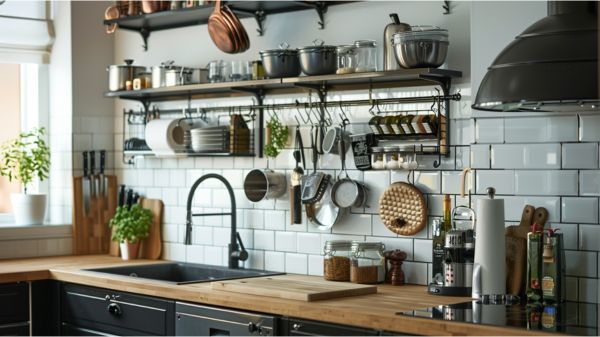Ultimate Guide To Septic Tanks and Septic System Maintenance
Are you tired of dealing with septic system problems? Did you know that 25% of American households rely on septic tanks for wastewater treatment? If you’re one of them, this ultimate guide is for you.
In this detailed and informative article, we’ll walk you through everything you need to know about septic tanks and septic system maintenance. From understanding how septic tanks work to protecting and maintaining them, we’ve got you covered. Say goodbye to septic headaches and join the community of informed homeowners who take control of their septic systems.
Key Takeaways
- Septic tanks are crucial components of septic systems that treat wastewater by decomposing organic matter.
- The drain or leach field plays a vital role in distributing treated wastewater into the soil and requires regular maintenance.
- Microorganisms, such as aerobic and anaerobic bacteria, are responsible for breaking down organic waste and removing nutrients to prevent pollution.
- Proper maintenance of septic tanks and regular inspections are essential for the overall health and functioning of the septic system, especially for small septic tanks in cabins.
Understanding Septic Tank Systems
When it comes to understanding septic tank systems, it’s important to familiarize yourself with the components that make up a septic system and the different types of septic systems available. The components of a septic system typically include a septic tank, a distribution box, and a drain field. Different types of septic systems include conventional septic systems, mound septic systems, and alternative septic systems like aerobic treatment units.
Components of a Septic System
When it comes to the components of a septic system, there are three key points to consider: the septic tank and its purpose, the drain or leach field, and the role of microorganisms in wastewater treatment.
The septic tank is the primary component of the system, designed to separate and treat solid waste from wastewater.
The drain or leach field, on the other hand, acts as the final stage of treatment, allowing the treated wastewater to be safely absorbed into the ground.
Lastly, microorganisms play a crucial role in breaking down and treating the organic matter in the wastewater, ensuring the system functions effectively.
Septic Tank and Its Purpose
To understand the purpose of septic tanks, you need to know that they are designed to safely and efficiently treat wastewater from your household. A septic tank serves as the primary component of a septic system, providing a place for the wastewater to separate into layers. The solid waste settles at the bottom, while the liquid waste floats on top.
Here are four key points to help you understand the purpose of a septic tank:
- Treatment of wastewater: The main purpose of septic tanks is to treat and process the wastewater from your home. A septic tank allows for the decomposition of organic matter, breaking it down into harmless substances.
- Separation of waste: The solid waste that enters the septic tank settles at the bottom, forming a layer called sludge. The liquid waste, known as effluent, floats on top. This separation allows for further treatment and disposal.
- Retention of solids: The septic tank retains the solid waste, preventing it from clogging or damaging the drainfield or distribution box. This ensures the proper functioning of the entire septic system.
- Protection of the environment: By treating and containing the wastewater, a septic tank helps protect the environment from pollution. It prevents harmful substances from entering the groundwater and nearby bodies of water.
Understanding the purpose of septic tanks is crucial when it comes to installing and maintaining a septic system. From choosing the right type of septic tank, such as a concrete septic tank, to ensuring proper maintenance of concrete septic tank lids, being knowledgeable about septic installation and maintenance is essential for the longevity and efficiency of your septic system.
Drain or Leach Field
The drain or leach field is responsible for distributing the treated wastewater from your septic tank into the surrounding soil, ensuring proper disposal. It is crucial to maintain your drainfield to prevent any potential issues.
Regular inspections by a septic tank service near you are recommended to ensure its optimal functioning. How often a septic tank needs to be pumped depends on various factors, including the size of the tank and the number of people in your household.
Installing a septic tank and drainfield is essential, especially if you have a small septic tank for a cabin. Keeping your drainfield in good condition is crucial for the overall health and longevity of your septic system.
Microorganisms and Their Role in Wastewater Treatment
Microorganisms play a crucial role in wastewater treatment within septic systems by breaking down organic matter and helping to purify the wastewater before it is released into the environment. Here are four key points to help you understand their importance:
- Bacteria: Certain bacteria, such as aerobic and anaerobic bacteria, thrive in septic tanks and are responsible for breaking down organic waste.
- Decomposition: Microorganisms facilitate the decomposition process by breaking down solids and converting them into liquid and gas forms.
- Nutrient Removal: These microorganisms also play a role in removing nutrients like nitrogen and phosphorus from the wastewater, which helps prevent pollution in the environment.
- Natural Process: The action of microorganisms in septic tanks mimics the natural process of decomposition, ensuring that the wastewater is properly treated before being released back into the environment.
Related Post: The Ultimate Guide to Easy Septic Tank Maintenance.
Different Types of Septic Systems
When it comes to septic systems, there are several different types to consider. The three main types are conventional septic systems, holding tank systems, and mound septic systems. Each type has its own unique features and considerations, so it’s important to understand the differences before making a decision.
Conventional Septic Systems
Conventional septic systems require regular maintenance to ensure proper functioning. Here are four tips to help you maintain your septic system:
- Schedule regular inspections by a professional to identify any potential issues and prevent costly repairs.
- Avoid flushing non-biodegradable items down the toilet or sink, as they can clog the system.
- Pump your septic tank every 3-5 years to remove accumulated solids and prevent overflow.
- Be mindful of water usage and avoid excessive water waste to prevent overloading the system.
Holding Tank Systems
It’s important to regularly pump and dispose of the accumulated waste to properly maintain your holding tank system,. Holding tank systems, also known as portable septic tanks, are designed to store wastewater temporarily.
To maintain your system, schedule routine pumping to prevent overflows and foul odors. Additionally, be mindful of what you flush down the drains and toilets to avoid clogs and damage to the tank. Insulate the pipes and tank and avoid compacting snow on top of the tank to prevent frozen septic systems during winter.
Mound Septic Systems
Now that you’ve learned about holding tank systems, let’s explore another type of septic system: the mound septic system. Mound systems are commonly used in areas with high water tables or poor soil conditions. Here are four key things you need to know about mound septic systems:
- Elevated Design: Mound systems are designed to raise the drainfield above ground level, typically using a mound of sand and gravel.
- Enhanced Treatment: These systems utilize a combination of natural processes and engineered components to treat wastewater more effectively.
- Pumping Requirement: Regular pumping is necessary to prevent solids from accumulating in the mound and causing system failure.
- Maintenance Considerations: It’s important to avoid planting deep-rooted trees or shrubs near the mound area to prevent damage to the system.
Understanding these important aspects of mound septic systems will help you properly maintain and care for your septic system.
Septic System Maintenance
When it comes to maintaining your septic system, there are several key points to keep in mind.
First, routine pumping and inspection are essential to ensure the system is functioning properly and to catch any potential issues early on. Secondly, it’s important to spread out your water usage throughout the day to avoid overwhelming the system.
Additionally, practicing proper toilet usage and being mindful of what goes down the kitchen sink can help prevent clogs and damage to your septic system.
Routine Pumping and Inspection
When it comes to the frequency of pumping your septic tank, there are several key factors to consider. These include the number of people in your household, the size of your tank, and the amount of wastewater generated.
By understanding these factors and following guidelines for determining the appropriate pumping schedule, you can ensure that your septic system operates efficiently and minimizes the risk of system failure.
It is also crucial to keep detailed maintenance records, as they can provide valuable information about the history of your septic system and help identify any potential issues before they become major problems.
Frequency of Pumping and Associated Costs
Determining the appropriate pumping schedule for septic tanks is crucial in order to avoid system failure and the associated costs. To help you navigate this process, here are four key factors to consider:
- Tank Size: The size of your septic tank will determine how often it needs to be pumped. Smaller tanks require more frequent pumping compared to larger ones.
- Household Size: The number of people in your household directly impacts the amount of wastewater generated. More people mean more frequent pumping.
- Water Usage: High water usage, such as excessive laundry or long showers, can overload the septic system. Regular pumping is necessary to prevent system failure.
- Solid Waste Disposal: Proper disposal of solid waste is essential. Avoid flushing non-biodegradable items, grease, and excessive chemicals to prevent clogging and extend the time between pumpings.
Importance of Keeping Maintenance Records
Keeping accurate maintenance records is crucial for ensuring the efficient operation and longevity of your septic system. By documenting regular inspections, pumpings, and repairs, you can track the health of your system and identify any patterns or issues that may arise.
These records provide valuable information for septic professionals, allowing them to make informed decisions and recommendations for your system. Additionally, keeping detailed records can help you maintain compliance with local regulations and demonstrate responsible stewardship of your property, fostering a sense of belonging within your community.
Spreading Out Water Usage
When it comes to managing your laundry and dishwasher usage, there are a few key tips to keep in mind in order to prevent overwhelming your septic system and flooding the drainfield.
First, make sure to spread out your water usage throughout the week, rather than doing all your laundry and dishes in one day. This will help prevent the system from becoming overloaded and ensure proper drainage.
Additionally, consider using energy-efficient appliances that use less water, such as low-flow dishwashers and washing machines, to further minimize the strain on your septic system.
Tips for Managing Laundry and Dishwasher Usage
To avoid overloading your septic system, it’s important to be mindful of how often you use the dishwasher and do laundry. Here are some tips to help you manage your laundry and dishwasher usage:
- Run full loads: Wait until your dishwasher and washing machine are full before running them. This will maximize water usage efficiency and reduce the strain on your septic system.
- Use water-efficient appliances: Consider investing in water-efficient appliances that use less water during each cycle. This will help minimize the amount of water entering your septic system.
- Spread out usage: Instead of doing all your laundry or running the dishwasher in one day, try to spread out your usage throughout the week. This will give your septic system time to recover and prevent it from becoming overwhelmed.
- Use eco-friendly detergents: Opt for eco-friendly detergents that are septic-safe. These detergents are specifically designed to break down easily in septic systems, minimizing the risk of clogs and backups.
Preventing Overwhelming the System and Flooding the Drainfield
Spreading out your laundry and dishwasher usage throughout the week will prevent overwhelming the system and flooding the drainfield. By staggering your loads, you give your septic system time to process and properly drain the water. This helps maintain a healthy balance and prevents any potential backups or damage. Remember, taking small steps like this can go a long way in ensuring the longevity and efficiency of your septic system.
| Do’s | Don’ts |
|---|---|
| Spread out laundry loads | Do all laundry at once |
| Use dishwasher sparingly | Run dishwasher daily |
| Give the system time to rest | Overload the system |
| Monitor water usage | Use excessive water |
| Practice water conservation | Neglect regular maintenance |
Proper Toilet Usage
When it comes to proper toilet usage, it’s crucial to remember two key points: flushing only toilet paper and avoiding items that can clog or damage the system.
Flushing anything other than toilet paper can lead to clogs and potential damage to your septic system. It’s important to educate yourself and your household members on what should and should not be flushed down the toilet to maintain the functionality and longevity of your septic system.
Flushing Only Toilet Paper
Make sure you’re using septic-safe toilet paper in order to prevent clogs and maintain the health of your septic system. Here are four reasons why using septic-safe toilet paper is crucial:
- Septic-safe toilet paper breaks down more easily, reducing the risk of clogs in your pipes and septic tank.
- It helps maintain the balance of bacteria in your septic system, which is essential for proper waste breakdown.
- Using septic-safe toilet paper can help extend the lifespan of your septic system, saving you money on repairs or replacements.
- It is environmentally friendly, as septic-safe toilet paper is typically biodegradable and less harmful to the environment.
Avoiding Items that Can Clog or Damage the System
It’s important to avoid flushing items that can potentially clog or damage your septic system, such as feminine hygiene products or paper towels. These items are not designed to break down in water and can cause blockages in your pipes or septic tank.
Additionally, they can interfere with the natural breakdown process of waste in your system. By only flushing toilet paper and nothing else, you can ensure the smooth operation and longevity of your septic system.
Mindful Kitchen Sink Usage
When it comes to maintaining a healthy septic system, there are a few key points to keep in mind about mindful kitchen sink usage.
First and foremost, it is crucial to dispose of food waste properly by avoiding dumping large amounts of leftovers down the drain. Instead, make use of composting or garbage disposal units to minimize the strain on your septic system.
Additionally, using septic-safe cleaning products is essential to ensure that harmful chemicals do not end up in your septic tank. These chemicals can disrupt the natural bacteria balance and lead to costly repairs.
Disposing of Food Waste Properly
To properly dispose of food waste in your septic system, you should avoid pouring grease down the drain. Grease can solidify and clog your pipes, leading to costly repairs.
Instead, use a paper towel to wipe excess grease off plates and pans before washing them. Additionally, consider composting food scraps or using a garbage disposal unit specifically designed for septic systems.
Using Septic-Safe Cleaning Products
Using septic-safe cleaning products is essential for maintaining the health and functionality of your septic system. These products are specifically formulated to be gentle on your system, avoiding harmful chemicals that could disrupt the delicate balance of bacteria.
Protecting Your Septic System
When it comes to protecting your septic system, there are three key points to keep in mind:
- Monitoring water usage: By monitoring your water usage, you can ensure that you are not overloading your septic system, which can lead to costly repairs.
- Protecting the drainfield: Taking steps to protect the drainfield, such as avoiding parking or driving heavy vehicles over it, can help prevent damage and maintain proper functioning.
- Using septic system-friendly products: Using septic system-friendly products, such as toilet paper that breaks down easily, can help prevent clogs and keep your system running smoothly.
Monitoring Water Usage
When it comes to maintaining your septic system, it’s important to remember the significance of water conservation and preventing excessive strain on the system. Conserving water not only helps to protect the environment, but it also ensures that your septic system is not overwhelmed with excessive water flow.
Importance of Water Conservation
To conserve water and protect your septic system, you should always be mindful of excessive water usage. Here are four important reasons why water conservation is crucial for maintaining a healthy septic system:
- Prevents overload: Excessive water usage can overwhelm your septic tank, leading to clogs, backups, and costly repairs.
- Preserves bacterial balance: Conserving water helps maintain the natural balance of beneficial bacteria in your septic tank, which is essential for proper wastewater breakdown.
- Reduces soil saturation: Excessive water can saturate the drain field, inhibiting proper wastewater absorption into the soil and potentially causing system failure.
- Saves money: By conserving water, you not only protect your septic system but also reduce water bills, saving you money in the long run.
Being mindful of water usage not only ensures the longevity of your septic system but also promotes environmental sustainability. So, make a conscious effort to conserve water and protect your septic system for a healthier home and planet.
Preventing Excessive Strain on the System
Conserving water is essential for preventing excessive strain on your septic system. By reducing your water usage, you can avoid overloading the system and potential issues like backups and leaks.
Be mindful of your daily water consumption and make simple changes, such as fixing leaky faucets and using water-efficient appliances. Avoid excessive water usage during peak times, like laundry and bathing, and consider investing in a low-flow toilet and showerheads. Your efforts in water conservation will ensure the longevity and functionality of your septic system.
Protecting the Drainfield
When it comes to protecting your drainfield, there are a few key points to keep in mind.
First, you should always avoid parking or driving over the drainfield area. The weight of vehicles can compact the soil and damage the pipes, leading to costly repairs.
Second, proper landscaping is crucial to maintaining the health of your drainfield. Be sure to avoid planting trees or shrubs with aggressive root systems, as they can infiltrate the pipes and cause blockages.
Finally, it’s important to direct water away from the drainfield. Excessive water can overload the system, leading to backups and potential failure.
Avoiding Parking or Driving Over the Drainfield
You should never park or drive over the drainfield to prevent damage to your septic system. The drainfield is a crucial part of your septic system that helps filter and treat wastewater before it returns to the environment. Here are four reasons why avoiding parking or driving over the drainfield is essential:
- Protects the pipes and distribution lines from being crushed or damaged.
- Prevents soil compaction, which can hinder the drainfield’s ability to absorb and treat wastewater.
- Reduces the risk of contaminating the groundwater with untreated sewage.
- Promotes proper drainage and prevents backups or overflows in your septic system.
Proper Landscaping and Directing Water Away from the Drainfield
To prevent water from pooling around the drainfield, it’s important to properly landscape and direct water away. By implementing effective landscaping techniques, you can ensure that excess water is diverted away from the septic system, preventing potential damage and costly repairs. Here are some tips to help you create a septic-friendly landscape:
| Tips for Proper Landscaping | Tips for Directing Water Away |
|---|---|
| Plant grass over the drainfield | Install downspout extensions to direct water away from the drainfield |
| Avoid planting trees or shrubs with extensive root systems near the septic system | Create swales or ditches to channel water away from the drainfield |
| Use mulch or gravel to cover the drainfield area | Grade the ground to slope away from the drainfield to prevent water accumulation |
| Regularly mow the grass to maintain proper drainage | Consider installing a rain garden or dry well to capture and absorb excess water |
| Avoid compacting the soil over the drainfield area | Install a French drain system to redirect water away from the septic system |
Using Septic System-Friendly Products
When it comes to maintaining a healthy septic system, it’s important to consider the products you use on a daily basis. One key factor to consider is choosing toilet paper that breaks down easily to prevent clogs and ensure efficient waste breakdown.
Additionally, using natural or plant-based cleaning products can help minimize the impact on your septic system and the environment, as they are less likely to contain harsh chemicals that can disrupt the delicate balance of bacteria in the tank.
Choosing Toilet Paper that Breaks Down Easily
Using toilet paper that breaks down easily is important for maintaining a healthy septic system. Here are four reasons why you should choose the right toilet paper for your septic system:
- Prevent Clogs: Toilet paper that doesn’t break down quickly can cause clogs in your pipes and septic tank, leading to costly repairs.
- Efficient Decomposition: Choosing toilet paper that breaks down easily allows it to decompose faster in your septic system, promoting better waste breakdown and reducing the risk of blockages.
- Environmentally Friendly: Opting for biodegradable and septic-safe toilet paper helps protect the environment by reducing the strain on wastewater treatment plants.
- Extends Lifespan: Using septic-friendly toilet paper can extend the lifespan of your septic system by preventing unnecessary strain and reducing the need for frequent pump-outs.
Using Natural or Plant-Based Cleaning Products
For a more eco-friendly approach, consider using natural or plant-based cleaning products. These products are not only better for the environment but also for your septic system.
Traditional cleaning products often contain harsh chemicals that can disrupt the balance of bacteria in your septic tank. By choosing natural alternatives, you can help maintain a healthy septic system and reduce the risk of costly repairs. Look for products labeled as ‘septic-safe’ or ‘biodegradable’ to ensure they won’t harm your system.
Related Post: Septic Tank Problems: The Common Signs and The Solutions.
Pros and Cons of Septic Tanks vs. Holding Tanks
If you’re considering installing a wastewater management system, it’s important to weigh the pros and cons of septic tanks versus holding tanks.
Septic tanks are a common choice as they offer natural treatment of wastewater and can handle a higher volume of waste.
On the other hand, holding tanks provide a temporary storage solution and require regular pumping, but they may be more suitable for certain locations or situations.
Understanding the key differences between these two options will help you make an informed decision for your property.
Septic Tanks
When it comes to septic tanks, there are both advantages and disadvantages to consider. On the positive side, septic tanks provide an effective and environmentally friendly way to manage household wastewater. They are also cost-effective in the long run, as they require less maintenance compared to a public sewer system.
However, there are some drawbacks to using septic tanks, such as the potential for leaks and the need for regular pumping and inspections to ensure proper functioning. It’s important to weigh these pros and cons before deciding if a septic tank is the right choice for your property.
Advantages
To properly maintain your septic system, you should be aware of the advantages it offers. Here are four reasons why having a septic system is beneficial:
- Cost-effective: Septic systems are more affordable to install and maintain compared to centralized sewer systems.
- Environmental-friendly: Septic systems treat wastewater naturally, reducing the pollution of water bodies and protecting the environment.
- Independence: Having a septic system gives you control over your own waste management, without relying on public sewer services.
- Longevity: With proper maintenance, septic systems can last for decades, providing reliable wastewater treatment for your property.
Disadvantages
Remember, maintaining your septic system is crucial because neglecting it can lead to costly repairs and potential health hazards. It’s important to be aware of the disadvantages that come with owning a septic system.
These include the need for regular pumping, the risk of system failure, potential groundwater contamination, and the responsibility of maintaining drain fields.
By understanding these drawbacks, you can take proactive steps to ensure the longevity and efficiency of your septic system, providing peace of mind and a sense of belonging to your community.
| Disadvantages |
|---|
| Regular pumping |
| System failure |
| Groundwater contamination |
| Drain field maintenance |
Holding Tanks
When considering holding tanks, it’s important to weigh the advantages and disadvantages. On the positive side, holding tanks offer a temporary storage solution for waste materials, providing flexibility and convenience. However, it’s crucial to note that holding tanks require regular maintenance and pumping, which can be costly and time-consuming.
Additionally, there is a risk of odor and leakage if proper care is not taken. Understanding both the advantages and disadvantages of holding tanks will help you make an informed decision for your specific needs.
Advantages
One of the advantages of septic systems is that they require less maintenance compared to centralized sewer systems. With a septic system, you can enjoy the following benefits:
- Cost-effective: Septic systems require less maintenance and are more cost-effective in the long run compared to centralized sewer systems.
- Environmentally friendly: Septic systems use natural processes to treat and filter wastewater, reducing the impact on the environment.
- Independence: Having a septic system gives you independence from municipal sewer systems, allowing you to have more control over your wastewater management.
- Durability: Well-maintained septic systems can last for decades, providing reliable wastewater treatment for your property.
Disadvantages
If you don’t properly maintain your septic system, you could experience issues such as clogs, backups, and expensive repairs. Neglecting regular maintenance can lead to a buildup of solid waste, causing clogs in your pipes and potentially backing up sewage into your home or yard.
Additionally, if your septic system is not properly maintained, it can become damaged and require costly repairs or even replacement. Taking the time to properly care for your septic system is essential to avoid these potential disadvantages.
Septic Tank and Holding Tank Maintenance
When it comes to maintaining your septic tank or holding tank, there are a few key points to keep in mind. First, regular maintenance is crucial to ensure the proper functioning and longevity of your tank. This includes regular pumping and inspection to prevent any potential issues or costly repairs down the line.
Septic Tank Maintenance
To properly maintain your septic tank, regularly schedule pump outs and handle solid waste. This is crucial for the overall health and longevity of your septic system. Here are four important steps to take when it comes to septic tank maintenance:
- Schedule regular pump outs: It is recommended to have your septic tank pumped every 3-5 years, depending on the size of your household and the usage. Regular pump outs help prevent solids from accumulating in the tank and potentially causing blockages or backups.
- Be mindful of what goes down the drain: Avoid flushing non-biodegradable items, chemicals, and excessive amounts of grease or oils. These can disrupt the bacterial balance in your septic tank, leading to system failures.
- Conserve water usage: Excessive water usage can overload your septic system, causing it to work harder and potentially fail. Be mindful of your water consumption by fixing leaks, using water-efficient appliances, and spreading out water usage throughout the day.
- Maintain your drainfield: Keep the area around your drainfield clear of trees, shrubs, and other vegetation. Roots can invade the pipes and cause damage. Additionally, avoid parking heavy vehicles or placing structures on top of the drainfield to prevent any damage to the system.
Holding tank maintenance
Regularly emptying the holding tank is essential for preventing overflow and potential issues with your septic setup. By ensuring that your holding tank is regularly pumped out, you can maintain the proper functioning of your septic system and avoid costly repairs or replacements.
The holding tank is designed to store and hold wastewater until it can be properly treated and disposed of. Over time, the tank can accumulate solid waste and sludge, which can lead to blockages and backups if not addressed promptly. By scheduling regular pump outs, you can remove these accumulated wastes, preventing them from clogging your system and causing overflow.
This not only helps to maintain the efficiency and longevity of your septic setup but also ensures the safety and cleanliness of your property. Don’t neglect the importance of regular holding tank maintenance; it is an essential part of responsible septic system ownership.
Converting Holding Tank to Septic Tank
Before converting your holding tank to a septic tank, it is crucial to check the local regulations and requirements in your area. This will ensure that you comply with any specific guidelines or permits needed for the conversion process.
Once you have determined the legal aspects, you can then proceed with the necessary steps for converting your holding tank to a septic tank, taking into consideration factors such as proper sizing, location, and installation methods.
Checking Local Regulations and Requirements
Make sure you’re familiar with the local regulations and requirements for septic tanks and system maintenance. It’s important to understand the specific rules in your area to ensure that your septic tank is in compliance and properly maintained. Here are four key things to consider:
- Permitting: Check if you need a permit to install or repair a septic tank. Each municipality may have different requirements, so it’s crucial to obtain the necessary permits before starting any work.
- Setbacks: Understand the setback requirements for your septic tank. This refers to the minimum distance that your tank must be from property lines, wells, bodies of water, and other structures. Adhering to setback regulations helps prevent contamination and ensures the safety of your system.
- Pumping frequency: Determine how often your septic tank needs to be pumped. Local regulations may specify a recommended pumping frequency based on factors such as the tank’s size and the number of occupants in your home. Regular pumping helps prevent solids from clogging the system and extends its lifespan.
- Maintenance requirements: Familiarize yourself with any additional maintenance requirements specific to your area. This may include regular inspections, water conservation practices, and use of septic-safe products. Following these guidelines will help keep your septic system functioning efficiently and prevent costly repairs.
Steps for Converting Holding Tank to Septic Tank
Understanding the specific rules in your area is crucial when converting a holding tank to a septic tank. Each region may have different requirements and regulations that you must adhere to ensure a successful and compliant conversion process. To help you navigate through this process, here is a step-by-step guide on converting your holding tank to a septic tank:
| Steps | Description |
|---|---|
| Step 1 | Research local regulations and obtain necessary permits and approvals. |
| Step 2 | Assess your current holding tank system and determine its compatibility for conversion. |
| Step 3 | Hire a professional septic tank installer to design and install the new septic system. |
| Step 4 | Decommission the old holding tank and properly dispose of its contents. |
| Step 5 | Regularly maintain and inspect your new septic system to ensure its proper functioning. |
Ensuring the Safety and Legality of the Conversion
To ensure the safety and legality of the conversion, it’s important to research local regulations and obtain the necessary permits and approvals. By following these steps, you can ensure a smooth and successful conversion process:
- Research local regulations: Before starting the conversion, it’s crucial to understand the specific requirements and regulations governing septic tank installations in your area. This will help you avoid any potential legal issues or fines.
- Obtain necessary permits: Contact your local government or health department to obtain the required permits for the conversion. This may involve submitting detailed plans, paying fees, and scheduling inspections.
- Hire a professional contractor: To ensure the conversion is done correctly and safely, it’s advisable to hire a qualified and licensed contractor who specializes in septic systems. They will have the expertise to properly install and connect the septic tank to your existing plumbing system.
- Get approval from relevant authorities: Once the conversion is complete, schedule an inspection with the appropriate authorities to ensure that the new septic tank meets all safety and environmental standards. This will provide you with the necessary approval and peace of mind.
Common Myths About Septic Systems
When it comes to septic systems, there are a few common misconceptions that need to be addressed.
First, many people believe that septic systems require additives in order to function properly. However, this is not the case. Septic systems are designed to naturally break down waste, and additives are not necessary for their operation.
Second, there is a misconception that septic systems can handle anything you flush down the toilet. While septic systems are designed to handle organic waste, they are not able to break down certain items like grease, oil, and non-biodegradable materials.
Lastly, some people believe that septic systems can last forever without any maintenance. Unfortunately, this is not true either. Septic systems require regular pumping and maintenance to ensure their longevity and proper functioning.
Related Post: Septifix Tablets Review: Solved Septic Problems Made Easy!
Frequently Asked Questions
How Long Does a Septic Tank Typically Last Before It Needs to Be Replaced?
On average, a septic tank typically lasts about 20 to 40 years before it needs to be replaced. Factors such as maintenance, usage, and quality of materials can affect the lifespan. Regular inspections and proper care can extend its longevity.
Can I Use Bleach or Other Household Cleaners if I Have a Septic System?
Yes, you can use bleach and other household cleaners if you have a septic system. However, it’s important to use them in moderation and avoid excessive use to maintain the health of your septic system.
Is It Necessary to Have My Septic Tank Pumped Regularly, Even if It Doesn’t Seem Full?
Yes, it is necessary to have your septic tank pumped regularly, even if it doesn’t seem full. Regular pumping helps prevent buildup and keeps your septic system working efficiently.
What Are the Signs That My Septic System Is Failing and Needs Immediate Attention?
If your septic system is failing and needs immediate attention, there are several signs to look out for. These include sewage backups, foul odors, slow draining sinks, and lush grass over the drain field.
Are There Any Specific Types of Toilet Paper That Are Better for Septic Systems?
You might be surprised to learn that there are actually specific types of toilet paper that are better for septic systems. Choosing septic-safe toilet paper can help prevent clogs and maintain the health of your septic system.
Conclusion
Maintaining your septic tank system is crucial for its proper functioning and longevity. By following the steps outlined in this ultimate guide, you can ensure that your septic system remains in optimal condition.
Remember to schedule regular maintenance, protect your septic system from potential hazards, and be aware of the pros and cons of septic tanks versus holding tanks.
With a little effort and knowledge, you can avoid falling prey to common myths and ensure your septic system is as reliable as a well-oiled machine. So, go ahead and give your septic tank the TLC it deserves!








2 Comments
Comments are closed.